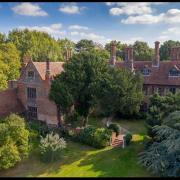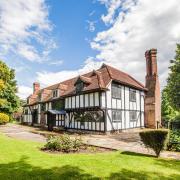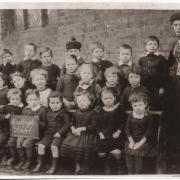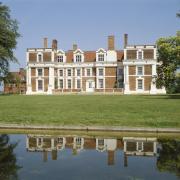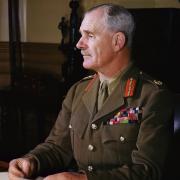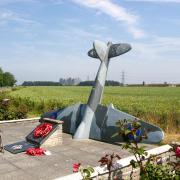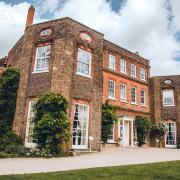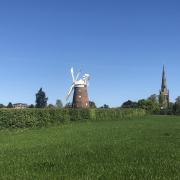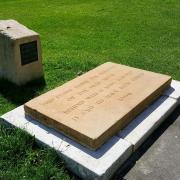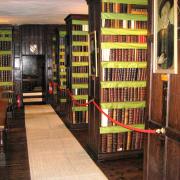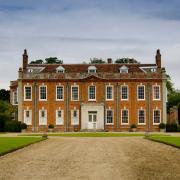Robinson Crusoe author Daniel Defoe (c.1660-1731) had an impressive CV: writer, trader, journalist, spy and one of the very first novelists. But did you know he also wrote a guide to Essex? Stephen Roberts discovers Defoe’s thoughts on our fair county...
The son of a butcher, he’d go on to become a famous author of fiction and non-fiction, writing everything from Robinson Crusoe and Moll Flanders to A Journal of the Plague Year and A tour thru the whole island of Great Britain, divided into circuits or journies (sic)’. We’re talking Daniel Defoe.
Born in London, Defoe is not an obvious choice for an Essex Great but then his A tour thru’ the whole island… is an early travel guide to the county. He seems to have journeyed widely, including on the continent, before he set up in the hosiery business, suffering bankruptcy along the way. He was a good Protestant, fighting in Monmouth’s rebellion against the Catholic-leaning James II, then joining the army of his supplanter, William III, during the Glorious Revolution of 1688.

Defoe’s autobiographical Appeal to Honour and Justice (1715) described his career from those heady days of 1688, including his time spent as a government spy. Defoe was well in with William and Mary, the co-monarchs, his poem The True-born Englishman (1701) right up the king’s street apparently. Things didn’t go swimmingly with the next monarch though, Queen Anne, Defoe’s The Shortest Way with the Dissenters (1702) seeing him fined, pilloried and incarcerated in Newgate. His political activities have been described as ‘dubious’ or a bit shady. The Review, a newspaper that he started on his release in 1704 and edited until 1713, was pioneering. It initiated the modern lead article, so his place in the pantheon of journalism is secure. Defoe was becoming one of our most versatile writers as he also conjured a ghost story, The Apparition of One Mrs Veal. Don’t assume he made it up – a lot of Defoe’s fiction was rooted in fact.

And what of Essex? Well, Defoe’s tour through the whole island took him to the eastern counties in 1722. Setting off from London on April 3, Defoe headed through Barking mentioning a ‘breach’ occurring betwixt Barking and Dagenham, which flooded 5,000 acres but had been sorted courtesy of a Captain Perry, and on beyond Tilbury where he commented on the flat land and marshland farming. There’s a detailed description of Tilbury Fort, which Defoe bigs up as ‘the key of the River Thames, and consequently the key of the City of London’. Osey (sic), or Osyth Island, is noted for the abundance of wildfowl, which attracts men with guns. However, as Defoe wryly points out they often return home with an ‘Essex ague on their backs’ (malaria in other words). Defoe also mentions the great quantity of fish supplying London markets and the mast erected by shipping and seafarers charity Trinity House (‘Shoe Beacon’) at a place called Shoeburyness ‘for the direction of the sailors’, as well as the Colchester oysters, the ‘best and nicest’ in England.

Defoe continues via Maldon to Witham, where he notes ‘there are … many gentlemen of good fortunes,’ before indulging in some name-dropping. Agriculture is aired: ‘Corn is grown and the breeding of calves, which I need not say are the best and fattest’ (he does though). Defoe soon rocks up at Colchester, which is ‘large, very populous’ but still ‘mourns in the ruins of a civil war’. Evidence of the 1648 siege must have been all too evident, and Defoe shows his interest in epidemics by throwing in the 1665 plague when ‘they buried upwards of 5,259 people,’ before mentioning a happier visitation, that of the late King William III, who stayed in the town ‘several times’. He lists some of Colchester’s ‘public edifices’: Bay Hall, the guildhall ‘called by them the moot hall’, the workhouse, a castle ‘ready to fall with age’ and two charity schools.
Defoe pops to Walton-on-the-Naze where ‘there are several large works called copperas houses,’ and the men of Trinity House have been busy again, erecting ‘a round brick tower, near eighty feet high.’ Then, on to Harwich, a ‘town of hurry and business’ where ‘the harbour is of a vast extent’ and the port is ‘where the packet boats, between England and Holland, go out and come in’. That explains why William (of Orange) stopped in Colchester on his way betwixt Harwich and London.
Defoe briefly mentions other towns, namely Romford, Brentwood, Ingatestone and Chelmsford ‘the county town,’ but there is ‘very little to be said of them’ (sorry folks). He continues with Dunmow, Braintree, Thaxted and Coggeshall and confidently predicts that he will ‘make the ladies laugh at the famous old story of the flitch of bacon at Dunmow’. I bet he did. The Forest of Epping and Hainault ‘spreads a great part of this country still’ then Defoe concludes with brief mentions of Bocking and Felsted.
Defoe’s greatest claim to fame is Robinson Crusoe (1719), his guide on how to survive in solitude; an early-18th century take on the modern lockdown. Unlike on Desert Island Discs, there was no luxury item; Crusoe ‘debarred the necessaries of civilisation’. It can be considered the world’s first significant work of realistic fiction but again had a basis in fact. Defoe got the idea after meeting mariner Alexander Selkirk in a Bristol inn – the sailor had been marooned on a desert island for four years. Crusoe was stranded for two decades. It’s a yarn about the unbreakable human spirit in adversity, which could have been a totem for our own times.

On that theme, The Journal of the Plague Year, whilst purportedly fictional, appears based on a diary as Defoe offers us the blueprint account of a great city, London, during a pandemic. If anyone writes about our experience of Covid-19, they are following in his pioneering footsteps. Moll Flanders meanwhile remains one of the best stories of ‘low life’. Jane Austen it is not. The truly amazing thing about Defoe is his anticipation of almost every genre of modern fiction; the one exception being the social novel for which we awaited Samuel Richardson (1689-1761). Nevertheless, we can regard Defoe as the first true novelist of the English language.
CHRONOLOGY
c.1660 – Birth of Daniel Defoe in London.
1684 – Married Mary Tuffley, Defoe’s wife until his death.
1688 – Defoe joins the army of William of Orange during the Glorious Revolution.
1703 – After a spell in the pillory Defoe is sent to Newgate prison.
1704 – Following his release Defoe begins editing The Review.
1719 – Publication of Robinson Crusoe, Defoe’s most famous work.
1722 – Defoe explores Essex as part of his ‘tour thru’ the whole island’.
1731 – Death of Daniel Defoe in London (April 24) aged 70.





